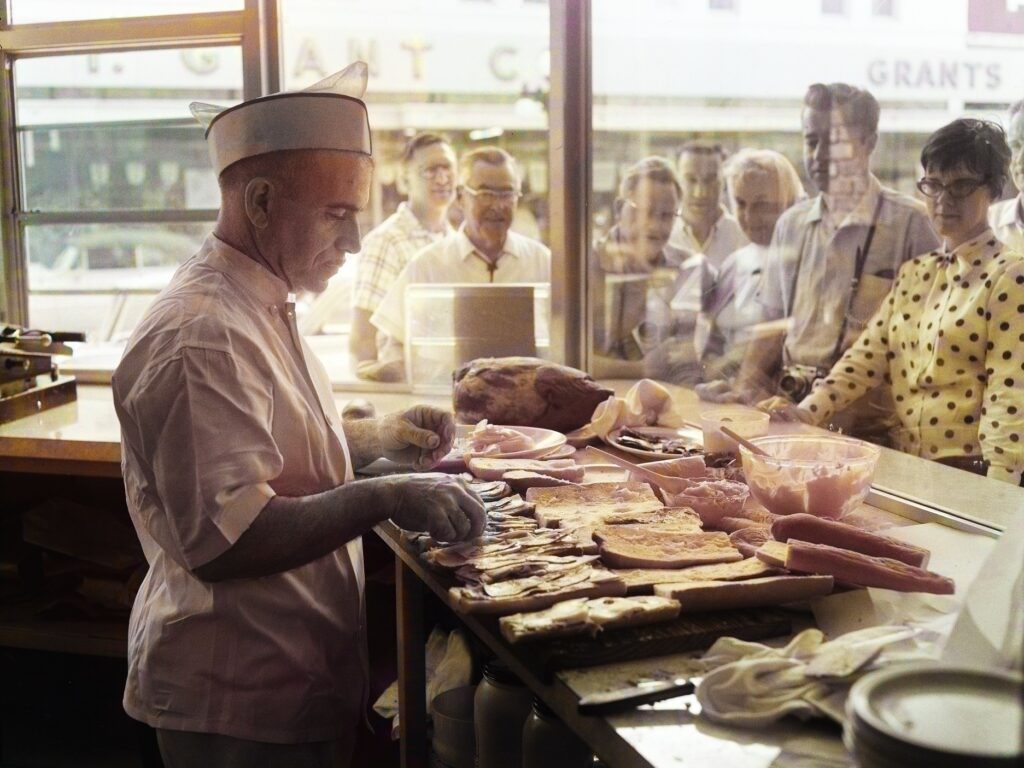Featured
- Get link
- X
- Other Apps
9 Cuban sandwich facts
Have you heard about the Cuban sandwich? It’s a marvel of flavors tightly packed between bread. Think juicy pork, sweet ham, tangy pickles, and a smooth layer of Swiss cheese, all brought together in a golden, pressed loaf that’s crisp to the touch.
This delightful combination is more than just food; it’s a piece of Cuban-American heritage on your plate. Curious to explore the legendary status of the Cuban sandwich? Stay with us and let us know about these Cuban sandwich facts, and by the end, you might be tempted to whip up one of these delicious sandwiches yourself!

What is Cuban Sandwich?
A Cuban sandwich is a popular dish from Cuban-American cuisine, featuring layers of roasted pork, ham, Swiss cheese, and pickles, all nestled within a lightly buttered and pressed Cuban bread. The combination of meats and cheese with the tangy crunch of pickles creates a balanced, savory flavor that’s enhanced by the crispiness of the grilled bread. It’s celebrated not only for its taste but also as a cultural symbol, representing the fusion of Cuban and American culinary traditions.

Who invented the Cuban sandwich?
The exact origin of the Cuban sandwich is somewhat debated, but it’s generally agreed that the sandwich was developed by Cuban immigrants in the late 1800s to early 1900s, primarily in Florida. The cities of Tampa and Miami both claim to have played pivotal roles in the creation and popularization of the Cuban sandwich.
In Tampa, the sandwich evolved in the community of Ybor City, where Cuban, Spanish, Italian, and German immigrants worked together in cigar factories. This cultural melting pot influenced the sandwich, with contributions like Genoa salami from Italians adding a unique touch that is still typical in Tampa’s version of the sandwich.
Miami also stakes a claim, emphasizing a more straightforward approach, focusing on the key ingredients of pork, ham, cheese, and pickles. The city’s version reflects a closer tie to the original sandwiches eaten by Cuban workers in both Cuba and early immigrant communities in Florida.


The Cuban sandwich as we know it today is a product of these diverse influences, making it a distinctive part of Florida’s culinary tradition.
9 Cuban sandwich facts

Origin in Tampa’s Ybor City:
The Cuban sandwich was developed in the late 1800s by Cuban immigrants in Tampa’s Ybor City, an area known for its cigar factories. This flavorful sandwich was a convenient, hearty meal for the factory workers, blending local Cuban culinary traditions with influences from other immigrant communities in the area.
A Fusion of Cultures:
Reflecting the diverse population of early 20th century Tampa, the Cuban sandwich incorporates salami from Italian immigrants, ham and pork influenced by the Spanish, and mustard preferred by German residents, each adding their unique touch to this iconic dish.
Tampa vs. Miami: The Salami Debate:
The inclusion of salami in a Cuban sandwich is a topic of culinary contention. In Tampa, salami is a staple part of the sandwich, thanks to the Italian community’s influence. In contrast, Miami’s version omits salami, sticking to what they consider the more traditional ingredients.
From Hoax to Holiday:
National Cuban Sandwich Day, celebrated every August 23rd, was originally created as a hoax by a newspaper writer to see if a new holiday could gain traction. The day is now embraced by fans of the sandwich across the United States, celebrating the rich cultural heritage and deliciousness of the Cuban sandwich.
World Record for the Longest Sandwich:
During an annual Cuban Sandwich Festival in Ybor City, a 105-foot-long Cuban sandwich was crafted, setting a world record. This event showcases the community spirit and pride in this beloved sandwich.
International Reach:
The appeal of the Cuban sandwich has crossed oceans, with variations found in places as diverse as Belfast, Ireland, and Seoul, South Korea. Each location adds its local flavor while maintaining the core ingredients that define the classic Cuban sandwich.
Official Recognition in Tampa:
The city of Tampa has officially recognized the Cuban sandwich as its signature sandwich, a testament to its integral role in Tampa’s cultural and culinary landscape. This formal acknowledgment underscores the sandwich’s importance to the city’s identity.
Traditional Bread Is Key:
Authentic Cuban sandwiches are made with Cuban bread, known for its thin crust and soft interior. True aficionados know that the unique flavor and texture of the bread are crucial to crafting the perfect sandwich.
Spotlight in Popular Culture:
The Cuban sandwich gained further fame through its feature in the film Chef, where it is prepared and sold from a food truck by the main character, highlighting the sandwich’s appeal and introducing it to a broader audience.
Each of these facts underscores the Cuban sandwich’s rich history, cultural significance, and enduring popularity both in the United States and around the world.
Conclusion
The Cuban sandwich stands as a testament to culinary fusion and cultural heritage, melding the flavors and traditions of the communities that have cherished it. Born in the cigar factories of Tampa’s Ybor City, enriched by diverse immigrant influences, and celebrated from Miami to Seoul, the Cuban sandwich transcends its simple ingredients to become a global icon of flavor.
Its story is a slice of the American melting pot, served between the crispy halves of Cuban bread. As both a local pride and a subject of playful rivalry, the Cuban sandwich continues to delight and inspire food lovers everywhere.
source https://sazonytumbao.com/9-cuban-sandwich-facts/
- Get link
- X
- Other Apps
Popular Posts
Street Food Culture in the Caribbean: A Culinary Journey
- Get link
- X
- Other Apps
Comments
Post a Comment